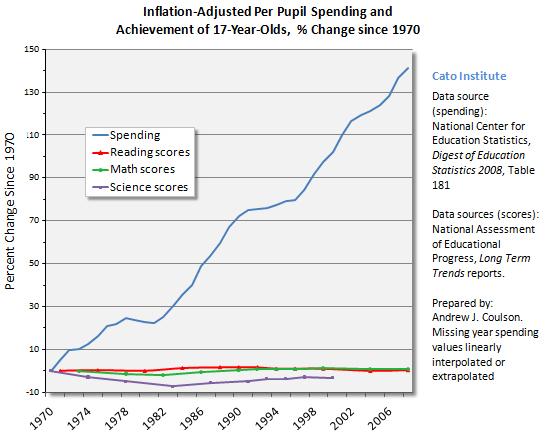Federal Education Failure
The 1965 Elementary and Secondary Education Act sparked a huge increase in federal education spending and regulations. The legislation’s Title I was supposed to provide aid to K–12 schools in high-poverty areas, but by the end of the 1960s it was providing aid to 60 percent of the nation’s school districts. Today, Title I is the largest federal subsidy program for K–12 education.
In addition to Title I, the 1965 act created subsidies for teacher training, educational research, school libraries, textbooks, student literacy, school technology, school safety, and other items. It also beefed up state-level school bureaucracies directly with “grants to strengthen state departments of education.”
Since that time,
federal education spending has gone through the roof. Set aside the fact that the Constitution doesn’t give the federal government the power to spend money on state and local affairs like education. Has all that federal money translated into better educated students?
According to
Andrew Coulson, the answer is decidedly no. The following chart shows that while federal per-pupil education spending has exploded, student achievement has flat-lined:
Coulson then asks, “But what if state and local education spending have been falling just as federal spending has been rising, nullifying its effects? After all, we read every day in the newspaper about how public schools are starved for funds.”
Once again, government education spending has exploded but student achievement hasn’t budged:



Zircon - This is a contributing Drupal Theme
Design by
WeebPal.

